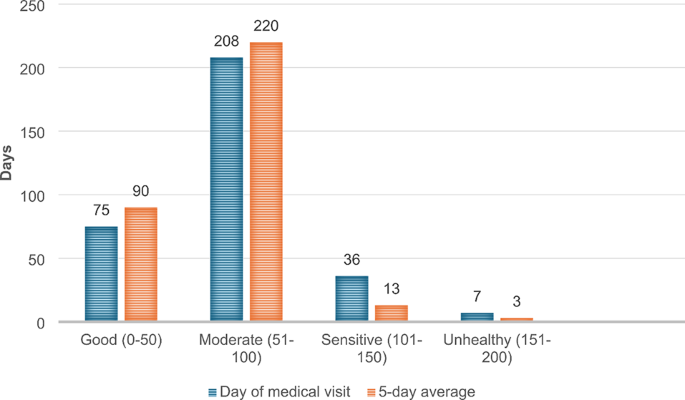Air Pollution Linked to Immune Suppression and Respiratory Issues, Study Finds

A recent study conducted in Erzincan, Turkey has revealed a significant association between air quality index (AQI) and hematological parameters as well as pulmonary function test (PFT) parameters in a healthy population. The research, published today, suggests that while moderate levels of air pollution may not pose an immediate health risk, it can still have long-term effects on the immune system and respiratory health.
According to the study, majority of the days recorded 63.2% had AQI values between 51 and 100, categorizing air quality as "moderate". The findings suggest that while this level of pollution may not be hazardous at acute limits, it can still have detrimental effects on respiratory health, even among individuals without pre-existing conditions.
The study found a significant correlation between AQI levels and hematological parameters such as leukocyte, platelet, and lymphocyte counts. However, no significant correlation was observed with PFT parameters. These changes are thought to be due to the suppression of immune activity caused by high levels of air pollution.
Experts say that exposure to PM10 and NO2 from prolonged air pollution can lead to oxidative stress, triggering systemic inflammation and affecting the production and turnover of immune cells such as leukocytes, lymphocytes, and platelets. "The negative correlations observed in this study may reflect a suppression of immune activity due to oxidative stress or a compensatory mechanism in response to chronic low-level inflammation," said Dr., the lead researcher.
Researchers also found that pulmonary function test (PFT) indices decreased with increasing AQI levels. Specifically, reductions were seen in the percentage of predicted forced expiratory volume one (FEV1%), forced vital capacity (FVC%), and FEV1/FVC ratio.
Furthermore, researchers observed significant correlations between small airway function markers such as FEF50% and higher AQI levels. "The sensitivity of these values to air pollution highlights their potential utility in early detection of respiratory effects in populations exposed to moderate levels of pollution," said Dr.
These findings underscore the need for proactive monitoring and longitudinal studies to assess the cumulative effects of chronic air pollution exposure on both pulmonary and systemic health outcomes.
Air quality standards have been set by the government, but enforcement varies across regions. Airborne pollutants are emitted from industrial sites, construction industries, vehicles and other sources.
